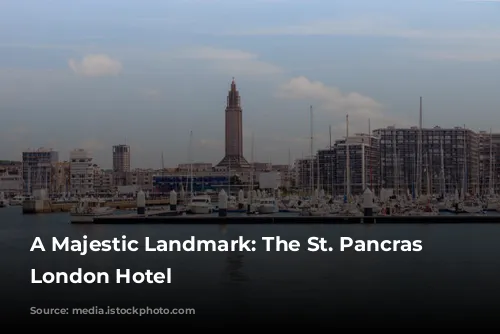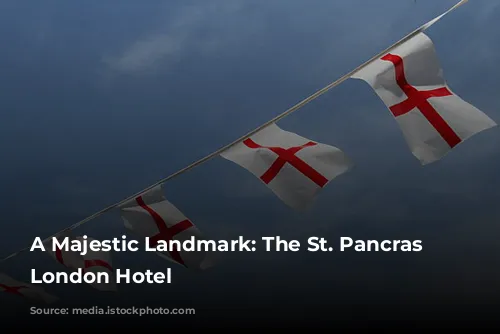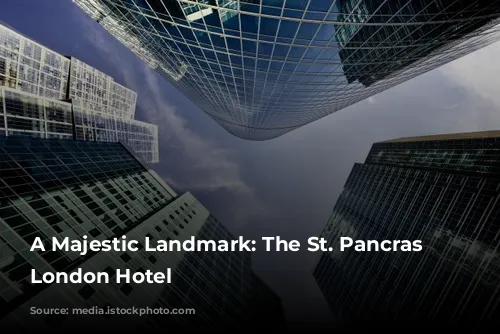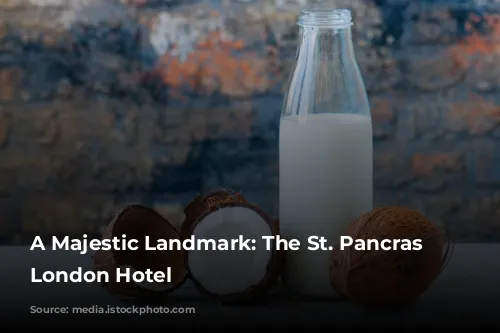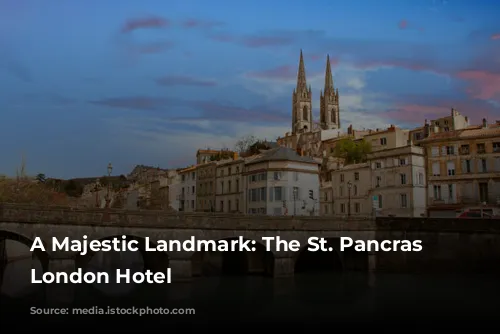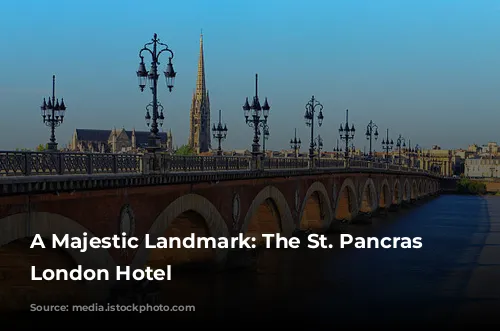Step into the heart of London’s grand railway heritage at the St. Pancras Renaissance Hotel, a magnificent structure that seamlessly blends Victorian elegance with modern comfort. This iconic building, perched atop the bustling St. Pancras International Station, serves as a gateway to both the city and the continent.
Imagine traveling through Europe’s grand train stations, arriving at the heart of London, and being greeted by the breathtaking St. Pancras Renaissance Hotel. The station, a major hub for international travel, is the final stop for trains originating in Paris, Brussels, Amsterdam, and other European cities.
A History Steeped in Grandeur
This landmark hotel’s roots stretch back to the 19th century, its origins intertwined with the rise of the railway network. In 1865, the Midland Railway Company held a contest to design a grand hotel adjacent to their St. Pancras station, which was still under construction. Eleven designs were submitted, including one by George Gilbert Scott, whose 300-room proposal far surpassed the original specifications.
Despite the extravagant scale, the Midland Railway was captivated by Scott’s vision. Construction began, bringing to life a hotel with five floors, although the final design included only four to reduce costs. The east wing of this majestic structure, with its grand staircase, gold-leaf adorned walls, and fireplaces in every room, opened on May 5th, 1873. The hotel was completed in the spring of 1876.
The St. Pancras Renaissance Hotel was a testament to luxury and innovation. It boasted advanced amenities for the era, including hydraulic lifts, concrete floors, revolving doors, and fireproof floor constructions. However, the hotel lacked a quintessential feature: bathrooms. This was the norm of the time, and the opulent hotel relied on an army of servants to cater to guest needs.
From Glory to Neglect and Restoration
The hotel’s fortune changed in 1922, when it was taken over by the London, Midland and Scottish Railway. However, the grandeur of the past eventually gave way to obsolescence. By 1935, the hotel’s outdated utilities, coupled with the exorbitant costs of maintaining the extensive staff, led to its closure.
The building, now known as St. Pancras Chambers, served as railway offices for decades. Despite attempts to demolish it, the efforts of Jane Fawcett, a dedicated preservationist, and the Victorian Society secured Grade I listed status for the hotel and station in 1967.
The building’s neglect continued until the 1980s, when it failed fire safety regulations and was closed. Thankfully, the exterior was meticulously restored in the 1990s at a cost of £10 million.
A Reborn Icon: The St. Pancras Renaissance Hotel Today
In 2004, plans were approved to transform the grand old building into a new hotel. The main public rooms of the former Midland Grand were restored to their original glory, along with some of the bedrooms. The old taxi driveway, which passed under the main tower of the building, was repurposed into the hotel’s elegant lobby.
To meet the modern expectations of discerning guests, a new wing was constructed on the west side of the Barlow train shed. This addition, along with the restored historic areas, houses a total of 244 bedrooms, two restaurants, two bars, a health and leisure center, a ballroom, and 20 meeting and function rooms.
The St. Pancras Renaissance Hotel finally reopened its doors to guests on March 14, 2011. The grand opening, held on May 5th, marked a poignant moment – exactly 138 years after the original opening.
A Star in Film and Literature
The St. Pancras Renaissance Hotel has captivated filmmakers and authors alike, becoming a backdrop for various cinematic and literary works. The hotel’s grand exterior and interior have graced the silver screen, appearing in films like “Richard III,” “Batman Begins,” and “The Secret Garden.” It also played a crucial role in Douglas Adams’ novel “The Long Dark Tea-Time of the Soul,” where it served as the real-world equivalent of Valhalla, the Norse god’s realm.
The St. Pancras Renaissance Hotel is a testament to the enduring power of history and architecture. A grand symbol of Victorian elegance and innovation, it stands today as a luxurious haven for travelers, capturing the spirit of London’s rich past.


